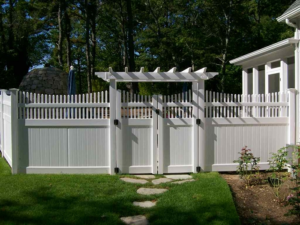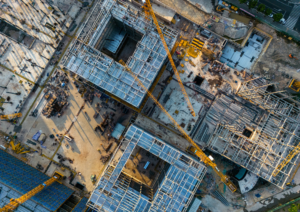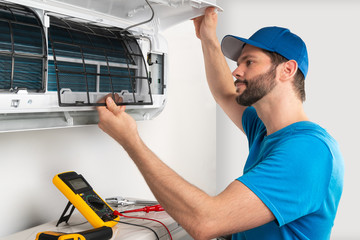Ballroom Dance Lessons Wesley Chapel, Florida offer a friendly, welcoming atmosphere. They are also great for meeting new people and staying in shape. They can even help you feel more confident in social situations.

Beginners should be prepared to work hard on their dance lessons. It takes time to learn a new skill, just like learning a musical instrument or a new language.
Whether you’re a novice or an experienced dancer, learning ballroom dance is an excellent way to exercise. It stimulates your brain, burns calories and helps improve your balance. Moreover, it’s an enjoyable way to spend your time. In addition, it’s a fun social activity that can help you meet new people and have a great time!
Ballroom dancing is a social dance that focuses on partner work. It also involves body conditioning, flexibility and aerobics. The movements can vary from simple to complex and are designed to make you look good on the dance floor. It also requires a certain amount of coordination, which makes it a great way to increase your confidence level.
When it comes to learning ballroom dance, you’ll need to have a good sense of rhythm and timing. This will help you execute the steps correctly and ensure that you’re not making any mistakes. You can try to practice your moves on your own, or you can sign up for a beginner class. A good ballroom dance instructor will provide you with a personalized experience that combines instruction, guidance and support.
Dancing is a good workout because it exercises every muscle in your body. It also tones your muscles, improves your balance and flexibility, and improves the condition of your heart and lungs. In fact, a recent study has shown that dance can even keep your brain sharp as you age.
Learning how to dance can be a challenge, but it’s worth the effort. It’s a fun way to get exercise, meet people and learn a new skill. If you’re bored of going to the gym and working out on the same machines all the time, then dancing is definitely something you should consider!
In order to do a good job at dancing, it’s important to understand the basic anatomy of the human body. This knowledge will help you avoid injuries and make your dancing more efficient. In addition, it will help you develop your own unique style. Ultimately, the most important thing to remember is to have fun and be confident!
It’s a social activity
Whether you’re a seasoned dancer or a beginner who is taking your first steps, ballroom dancing is an important social activity that brings people together from all walks of life. This is a great way to meet new people, develop friendships and even find romance. It is a fun way to get out of the house and be active. The community of dancers provides a host of social opportunities, including clubs, parties, and competitions.
In addition to lessons, most studios offer group dance events for their students. These events are a great way to practice your moves in an environment that is safe and friendly. Some schools also offer social dance parties for their students and guests.
While the exact structure of dance lessons varies from school to school, most have similar structure. Lessons generally begin with the instructor explaining what the class will cover. Then, they will lead you through a warm-up and the basic steps. Afterward, they will teach you a choreographed dance. If you are a beginner, these classes may be fast-paced and require a lot of repetition.
Most beginners do not need a partner to attend dance lessons. However, most teachers rotate partners during the lesson to give you a variety of experiences as a leader and follower. Although you may feel uncomfortable at first, this is part of the learning process and it is necessary to grow as a dancer.
In addition to lessons, ballroom dancers often attend dance events and participate in competitive competitions. The competitions range from local, state, and national championships to professional and amateur (pro-am) competitions. These competitions are regulated by the World Dance Council. Competitions are not only a form of entertainment, but they can help improve the health and wellbeing of the participants. For example, they can decrease the risk of cardiovascular disease and depression. They can also provide a sense of accomplishment and pride. This is particularly true for young adults and children, as it helps them develop a positive body image. In addition, it provides a fun, social activity for families.
It’s a great way to meet new people
Ballroom dancing is a fun and social way to meet new people. In addition to a great workout, ballroom dancing is also beneficial to your mental health. In fact, it’s an excellent form of therapy for anxiety and depression. This is because dance is a natural mood booster. It is also a great way to reduce stress, improve balance and coordination, and strengthen your weight-bearing bones. In addition to the social benefits, learning ballroom dance can also increase self-esteem and confidence. As you progress in your lessons, you’ll find yourself becoming more confident both on and off the dance floor.
When you attend group classes, dance parties and studio special events, you will have plenty of opportunities to meet other dancers. Be sure to introduce yourself and ask questions about their dancing journey. Making an effort to talk with others will help you build connections that can last a lifetime.
Unlike most social relationships, dance friendships are mutually beneficial. Your dance friends will understand your undying commitment to the sport and support you through difficult times. They’ll also know what it feels like to miss out on sleep overs and family cinema trips because of dance commitments.
In addition to meeting new people, dance provides a safe and healthy environment for children. Whether you choose to learn Latin or American Style, both are suitable for children of all ages and abilities. Latin and Ballroom are both low-impact forms of exercise that encourage flexibility and agility. In addition, they’ll give your child a sense of accomplishment and achievement that will help them develop positive self-image.
Getting started with dancing is easy and fun, especially if you have a good teacher. A professional instructor can offer world-class instruction and create an individualized experience for you. They’ll also encourage you to reach your potential, and will help you become a better partner, both on and off the dance floor. With commitment and perseverance, you can be a confident and graceful ballroom dancer in no time. Just remember to keep your enthusiasm for dancing high and never let your nerves get in the way of your enjoyment.
It’s a great way to have fun
Learning to dance is a great way to have fun, and it can even improve your health. It combines physical activity, social interaction, and mental stimulation into one package, making it the perfect hobby for any age or ability level. Whether you want to showcase your moves at a party or just sway along to your favorite song while driving, dancing is a wonderful way to relieve stress and make new friends. You can find a ballroom dance studio in your area that offers group lessons, private lessons, and competitive training.
When you start taking dance classes, it is important to be aware that most of the time you will not be the only beginner there. In fact, most of your classmates will feel just as nervous as you do, and they are all there to have fun. You will probably have to trade partners frequently in your group dance class, and you may also need to dance with the instructor. But remember that this is part of the learning process and will help you become a better dancer.
The first step in having fun in your dance classes is to stop worrying about what other people think of you. Although this is hard to do, it will save you a lot of stress and energy. The more you focus on having fun, the better you will be. This will translate into your performance on the dance floor, as well as in everyday life.
Another way to have fun in your dance classes is to play a game. Put on some fun music, and have everyone dance around the room. Then, have a student choose a partner to lead or follow. Once the student has a partner, they can clown around and have fun dancing with them. Then, the students can dance again in a circle until they are done.
While learning to dance is a great way to have some fun, it can be dangerous if you aren’t careful. For example, it’s important to wear comfortable shoes. You should also avoid wearing clothing that restricts your movement. This will prevent you from making any unintentional mistakes. Finally, don’t forget to bring water or snacks to your dance classes. This will keep you hydrated and help you focus on learning more.

















